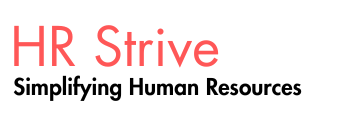For any organization committed to long-term sustainability and excellence, embedding Diversity, Equity, and Inclusion (DE&I) into its core operations is no longer optional—it is imperative. DE&I should not be viewed as a peripheral initiative or a set of isolated programs, but rather as a fundamental component of the organization’s identity, values, and daily business practices.
A truly integrated DE&I strategy means that inclusive behaviors and equitable policies are seamlessly woven into standard organizational procedures. For example, diversity training should not be treated as a standalone, one-off workshop but embedded within mandatory leadership development and supervisory training. Similarly, building a diverse workforce must evolve beyond special recruitment campaigns to become a routine and strategic element of all talent acquisition practices. In essence, DE&I should be reflected in “how we work” and “who we are” as an organization.
However, this integration does not suggest that DE&I efforts become static or immune to reassessment. Like any critical business strategy, a DE&I framework must be dynamic—continuously monitored, evaluated, and refined to remain effective. This becomes even more crucial given the evolving realities organizations face today:
-
Geographical Expansion and Cultural Nuances: As organizations grow across regions or countries, they encounter new cultural dynamics, regulatory environments, and community expectations. Each new context introduces unique diversity challenges and opportunities, demanding tailored approaches and adaptive policies.
-
Success Breeds Complexity: As DE&I initiatives begin to show tangible results—e.g., increased representation across identity groups—they often uncover new organizational dynamics. These include challenges around cross-cultural communication, managing diverse teams, or designing team structures that truly harness the benefits of difference. The focus may shift from merely resolving conflict to proactively leveraging diversity for innovation and cohesion.
-
Shifting Social Priorities: The focus of DE&I is not static; societal priorities evolve. Presently, much attention is directed toward generational diversity, gender equity (particularly women’s representation in leadership), and the inclusion of LGBTQ+ communities. As these issues mature or new global developments emerge, organizations must remain agile—revisiting and expanding their DE&I agenda to incorporate fresh challenges without being reactionary or losing strategic consistency.
In conclusion, the journey toward full DE&I integration is iterative and responsive. It demands that organizations not only institutionalize inclusive values but also commit to a cycle of reflection, learning, and strategic recalibration. When executed thoughtfully, DE&I becomes more than a set of initiatives—it becomes a cornerstone of organizational excellence and resilience.

No comments:
Post a Comment